Queen Victoria reigned over Great Britain for 63 years, and she is remembered as being one of the most influential monarchs in history. When it comes to the life of Queen Victoria, biographers are actually very lucky, because she wrote journals and letters documenting her daily life from the time she was a teenage girl all the way up to her death. So we know exactly what she was experiencing, in her own words. However, when she was close to death, she asked her daughter Beatrice to edit and rewrite many of her journals, and destroyed much of the original text that might offend members of her family.
After the Queen’s death, her children took it upon themselves to burn certain chunks of her life that were embarrassed of. Because of that, we have the image of her that her children wanted us to see: A woman who was known as the “Widow of Windsor” and spent her entire life mourning the death of her husband, Albert. But her life was far more interesting that she is often given credit for.
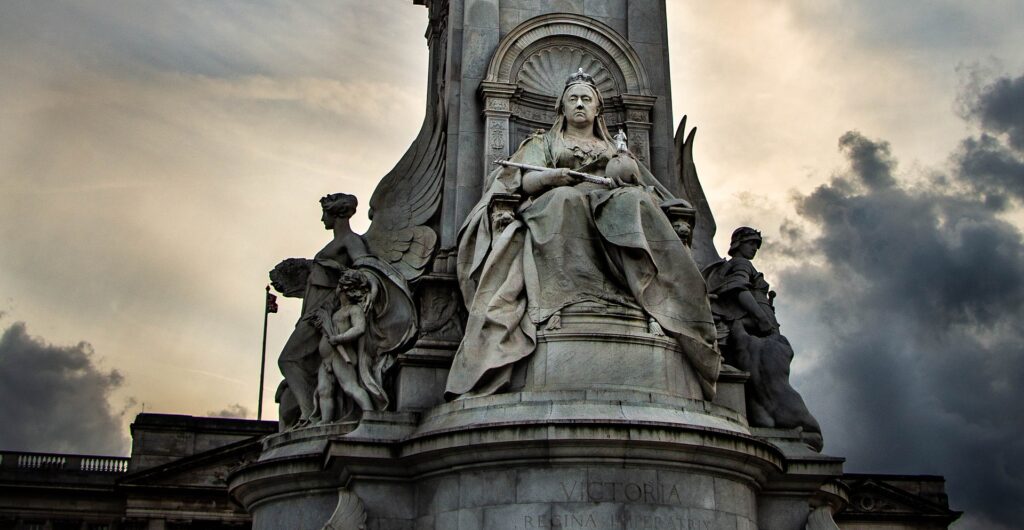
A Princess in Training
Victoria’s grandfather was George III, who was the reigning King of England during her youth. Her father was Prince Edward, the Duke of Kent, and her mother, Victoria of Saxe-Coburg-Saalfeld, was born in Germany before she became the Duchess of Kent. Prince Edward would have become the next king, but he died when Victoria was young, leaving her to be the only legitimate heir to the throne. Victoria grew up knowing that one day, she would become the next Queen of England.
At the time, women were never trusted with their own finances. To make matters worse, the Duchess of Kent only spoke German, but she was expected to raise an English queen. So a man named John Conroy was appointed as the comptroller over the lives of Victoria and her mother. Conroy took his duty much further than being just an accountant. He was an opportunist who saw this as a chance to have a powerful position in the government, and pushed for control over the way Victoria was raised. In a lot of ways, he became almost like a talent agent for a child star.
From an outsider’s perspective, it would seem that young Victoria had the perfect life. She was raised in a beautiful home of Kensington Palace with toys, clothes, servants, and vacations abroad. But in her journals, Victoria often wrote that she had a very unhappy childhood.
Together with her mother, Conroy created strict rules known as the “Kensington System”. The main goal of its design was to make Victoria weak and completely incapable of doing anything on her own. She was always in the company of a chaperone wherever she went. Instead of going to school, she had a governess to tutor her, and she was never allowed to play with other children. This was an extremely lonely life, and she desperately wanted to make friends. Conroy and Victoria’s mother hoped that if they broke the princess down enough, they could turn her into a puppet that was easy to control.
As a teenager, Conroy arranged for a tour on a train so that Victoria could see every major city in the UK. She was forced to try to memorize every single person’s name and title at each dinner party. Considering that these parties were massive, he had given her a task that was guaranteed to fail. Conroy would reprimand her, saying that she was too stupid to be queen.
Needless to say, the demands put upon her made Victoria, and the constant onslaught of insults made her completely miserable. In 1835, she was visiting the town of Ramsgate, and she became very ill with typhoid fever. Conroy accused her of being lazy, and a liar. He said that she was faking her illness, in order to get out of the tour. But she truly was sick, and she was lying in bed in a hotel.
John Conroy burst into the hotel room with a paper in his hand. He said that she would be a horrible queen, and demanded that she sign away her power over to him so that he could be her personal secretary. This would have made him King by proxy, because he would have absolutely power over all of her affairs. She was just 16 years old at the time, and spent her entire life being broken down to feel worthless. But she still had the strength to say “no”.
When she was 18, Victoria was woken up in the middle of the night by her mother, and she learned that her grandfather was dead. She came downstairs to find the Archbishop of Canterbury kneeling in front of her. And just like that, she was the new Queen of Great Britain.
Becoming the Queen
On the day of Queen Victoria’s coronation, the Prime Minister, Lord Melbourne was so moved by the beauty of the ceremony, he had tears in his eyes. He congratulated her, and told her that she was going to do a wonderful job. He looked at her with fatherly pride, which was something that she had never experienced before in her life. Victoria knew that she could trust him. The Prime Minister became her new father figure, and her very first friend. They would spend loads of time together doing jigsaw puzzles, and taking long walks. She often wrote that his sense of humor was her favorite quality about him, and how often he would make her laugh. But in public, she was forced to put on a serious face.
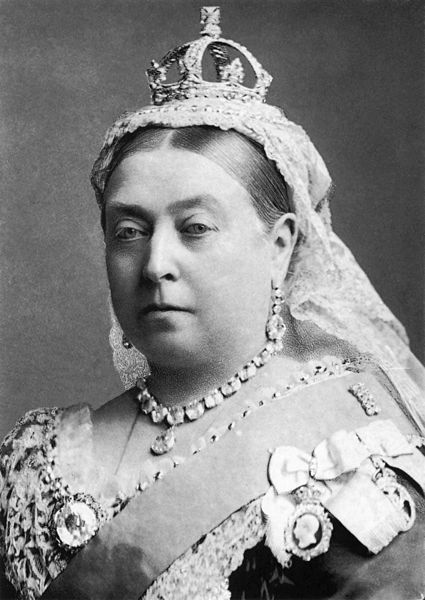
After becoming Queen, Victoria moved into Buckingham Palace, and she decided to never speak to her mother or Lord Conroy again. Their plans to control her had completely backfired. She hated the both of them, and was glad to finally have her independence. But that didn’t stop Lord Conroy from continuing to try to slither his way back into power. He approached Lord Melbourne, claiming that the Queen promised him a pension of 3,000 pounds per year, a title, land, and a seat in court. Melbourne gave in to Conroy’s demands. After hearing about his lies, Victoria dismissed Lord Conroy, but he continued to work for the Duchess of Kent, while they plotted their next move.
When Lord Melbourne’s time as Prime Minister was over and he was voted out of office, Victoria was devastated. She wrote about it in her journals with so much drama, it was as if he had died. Robert Peele became the next Prime Minister, and he treated her like she was a stupid girl, just like John Conroy had. He was part of the Tory political party, so he demanded that Victoria dismiss her ladies in waiting, because they were members of the Whig Party.

Victoria’s bedchamber maids were her dearest friends, so she was outraged at the suggestion that she should fire them over politics. She flat-out refused to continue obey Peele’s orders. After all, she was the Queen, so he really had no right to make demands of her, anyway. Robert Peele was so frustrated that he could not control her, that he actually resigned from being Prime Minister. This incident became known as the Bedchamber Crisis.
Life With Prince Albert
Even though Victoria’s mother and John Conroy were no longer on speaking terms with her, they were still trying to give more power to the German part of the family. They instructed Prince Albert, her first cousin, to court her, with the plot to get their family more control over the throne. Victoria had only met Albert once before, and by the time they were both 20 years old, she was shocked at how handsome he had grown up to be. She ran home to write in her journal how attractive he was, and how her heart was pounding.
Victoria had no idea that her mother had planned this clandestine meeting with Albert, but they truly did fall in love with one another. She was head-over-heels in love, and as the Queen, she was the one to ask Albert to marry her. In her diary, there are so many intimate details about their honeymoon, it might as well be a romance novel.
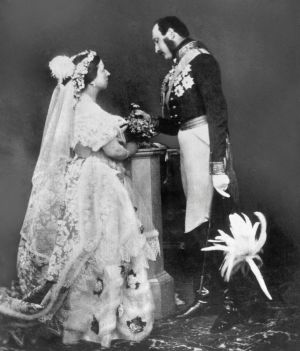
Victoria became pregnant just a month after her wedding. She was in constant pain, and felt very hormonal, as all pregnant women do. But she struggled with this, and was extremely critical of herself. Falling into a serious depression, Victoria would write in her diary about how guilty she felt every time she lost her temper. She would often write that her husband was “perfect”, and she hated herself for being anything but sweet and loving towards him at all times.
Little did the Queen know that this was all part of an extension of Conroy and the Duchess of Kent’s “Kensington Plan.” Albert’s German family instructed him to keep getting her pregnant, so that she would remain weak, and never had time to truly learn how to rule on her own. She wrote that pregnancy made her miserable, but they had a total of 9 children together. Unfortunately, Victoria did not like her own kids very much. Motherhood was not something she was ready for, and she suffered from postpartum depression. For all of those years, she “lowness and a tendency to cry… it is what every lady suffers with more or less and what I, during my first confinements, suffered dreadfully with.”
Tragedy
In the year 1861, Queen Victoria’s mother died of cancer. Despite all of the drama that had gone on between the two of them, she regretted not spending more time with her mother. She realized that John Conroy was the true villain, and she regretted not taking action to repair their relationship sooner. That same year, her husband Albert died. She was 42 years old, and suddenly, the closest people in her life were gone. After his death, she continued to sleep next to a picture of him, and had the servants lay out his clothes on the bed in the morning, even though he wouldn’t be there to get dressed. Whenever someone asked her to make a decision, she would accidently say, “I’ll have to ask Albert,” as if she forgotten, or was in total denial that he was dead.
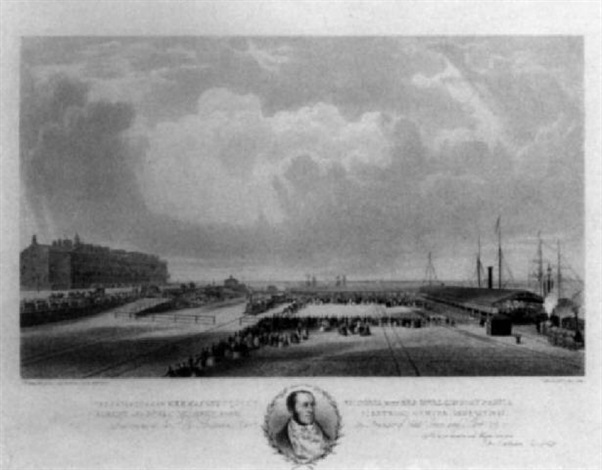
Victoria already struggled with mental illness, but these deaths in her life made it far worse. People whispered that she may have inherited “Hanoverian Madness.” After all, there was so much inbreeding going on in that part of her family, it shouldn’t be surprising that all of them were known for being a bit nuts. She dressed in black at all times, and acted completely melodramatic. She wrote her letters on paper with a black border to signify that she was in mourning. Instead of staying in Buckingham Palace, she went on long holidays in Germany. In her diary, she wrote that she wished she could have had a normal life, and lived in Germany with Albert without having to be Queen. Everyone began to call her “The Widow of Windsor.”
For the rest of her life, Victoria wore black every single day. She went on one of the longest periods of mourning in history. People thought that this was tragically romantic, so they became fascinated with death. Suddenly, it was fashionable to enjoy spooky and creepy things, and this inspired so much amazing culture during the Victorian Era. Most people think that this is where her story ends, and that she remained a very serious and sad woman for the rest of her days. But the reality is that she was able to heal, and learned to love her life again.
Moving On
After returning to the United Kingdom, Victoria met a Scottish man named John Brown when she was 45 years old. Brown had been Prince Albert’s assistant whenever he visited Scotland, so he was there to pay his respects. Instead of seeing her as just the Queen, he could see that Victoria was incredibly lonely woman, and all she really needed in her life was a friend. The two of them would get into long conversations, where she poured out all of the feelings she had kept secret, or in her diaries for so long. Brown had a lot of sympathy for her, and became devoted to serving her. He swore that he would never leave her side, and take care of her every need.
The greatest gift John Brown gave her was his personality. He was loud, rude, and almost always drunk. He would drink whiskey, and slipping some into Victoria’s drinks saying, “don’t stay thirsty”. No one had made Victoria laugh so much in years, and she absolutely loved it. The two became best friends, and possibly lovers.
If Brown disagreed with something she did, or if she was trying to stop her from making the wrong decisions, he would yell, “Woman, what are ye doin?!” Onlookers were shocked at his level of disrespect, but she actually enjoyed it very much. No one had ever dared to talk to her like that, or treat her like a normal person. Her entire life, everyone treated her like she was weak and stupid, but John Brown knew how smart and strong she truly was, so he held her to a higher standard. Their friendship lifted her spirit out of her depression, and she was the happiest she had been in a very long time.
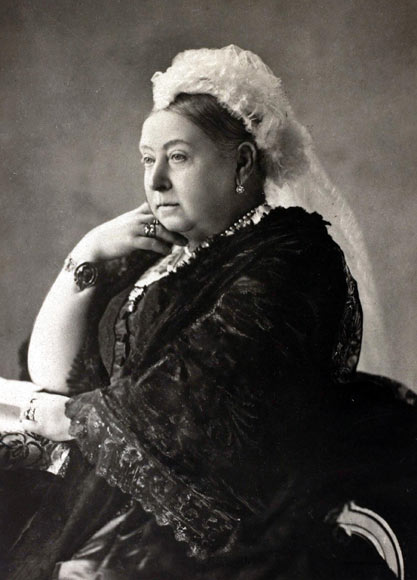
All her life, Victoria was writing in her journals every single day, and she was an avid reader. She made a decision to do something that no other monarch had never done before; become an author. Queen Victoria published a book called Leaves From The Journal of Our Lives in the Highlands, which was full of excerpts from her own personal journal about her friendship with John Brown, and how he changed her life. It became a bestseller, and sold over 100,000 copies. She even gave a dedication to John Brown’s muscular legs, which peeked out of his kilt.
Her kids were embarrassed, but then again- any kid would feel embarrassed if their mother wrote about those things, and then published them. After her death, Victoria’s daughter, Beatrice deleted all mention of John Brown when she was rewriting Victoria’s journals, because their relationship was considered to be a truly humiliating stain on the royal family. But of course, she could not erase him from history. Queen Victoria had commissioned statues to be made in John Brown’s honor. And plenty of people had witnessed them together when he was alive.
Victoria and John held hands and hugged one another in public together, and of course, there was also the book she published about their friendship. There is rumor that they were secretly lovers. Victoria made sure that they slept in conjoining bedrooms, and her children called him “mama’s lover”. On his deathbed, the Queen’s personal chaplin, Rev Norman Macleod, confessed that he married Queen Victoria and John Brown in a secret ceremony. Years later, we would learn that he gave her his mother’s engagement ring.
Tragically, she outlived Brown, too, even though he was several years younger than her. He died at age 56, so she lost yet another man in her life that she truly loved. In 1997, a movie called Mrs. Brown was made to dramatize their love story. Despite the evidence, there are still historians who refuse to believe that Queen Victoria would marry a commoner like John Brown. And, if she had, they think she would have been brave enough to let the world know, instead of keeping it a secret. Unfortunately, we will never know all of the details, because they have been lost forever.
The Later Years
As we mentioned before, Queen Victoria was incapable of running a government on her own, and she was known for being a bit off her rocker. The decisions she made were usually based on her personal preferences, rather than politics. Prime Minister Gladstone was very serious, and didn’t have any sense of humor at all. So, of course, Victoria hated him. They would write nasty letters back and forth to one another, even though they both lived in Buckingham Palace, and could have easily spoken to one another face-to-face.
The next Prime Minister Disraeli had a much better sense of humor, and treated her with respect. He would compliment her, and treat her like the royal she was. Disraeli lovingly called her “the fairy queen”, and gave her the title “Empress of India.” Queen Victoria had never been to India her entire life, but after being given this title, she set out to learn as much about the country as she possibly could. She hired a tutor named Abdul Karim so that she could learn to speak the Indian language Hindustani. In her notebooks, she took notes every time asked him how to say flirtatious or dirty things. Karim became her new favorite servant, and he was given the title of “The Munshi”, or “The Teacher”. Victoria allowed him to go with her everywhere, even when she was on holiday.
Compared to the loud and boisterous John Brown, the people in Queen Victoria’s court were actually very relieved that her new favorite servant was at least soft-spoken and a real gentleman. They saw this as a huge improvement. However, Karim soon began to get showered with gifts, and gained more and more privileges. Plenty of people were concerned that Victoria was going to be taken advantage of, and that she was making poor decisions. After all, being a good tutor didn’t exactly qualify Abdul Karim to become a hold any position of power. But the moment anyone questioned anything to do with Karim, she would accuse them of being racist. Abdul Karim was always getting sick…It turns out that he had Gonorrhea. But, of course, if the royal physician was getting frustrated, Victoria pulled the race card once again.
He came with her on vacation to the Riviera, and the newspapers described him as a “servant”. She wrote a letter to the newspaper and, demanded that they retract their last story and submit a correction. Abdul Karim was and educated gentleman, and her “Indian secretary.” While she was incredibly eccentric, there is no doubt that once anyone became Queen Victoria’s friend, she was fiercely loyal, and made sure they lived their best life.
Death, and Legacy
At 81 years old, Queen Victoria planned for her death, and when she had a hemorrhagic stroke, they knew how to prepare for her funeral. Throughout her life, Queen Victoria had been given precious jewels, but they meant nothing to her in those final days. She told her doctors what she wanted a number of sentimental items in her coffin. First was Albert’s dressing gown, which she had in their bedroom all of those years. Next were the photos of the children, as well as the locks of their hair that she had collected from their first haircuts. She requested to have a framed photograph of John Brown in her hands, laying over her heart. On her finger, she wore an engagement ring that once belonged to John Brown’s mother.
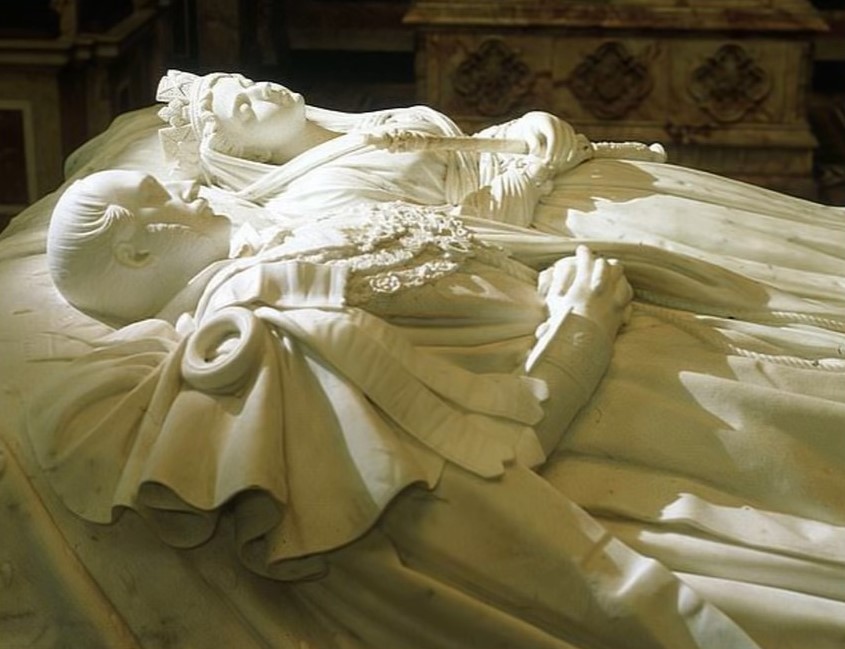
Queen Victoria’s funeral took place on February 2nd, 1901. Despite it being in the middle of winter, thousands of people showed up to mourn, and it became one of the largest funerals in history. She never lead the country through war, or ever made any substantial improvements in politics, but people still loved her all the same.
So many Prime Ministers came and went during Queen Victoria’s reign, but they have been all-but-forgotten. The monarch who reigns over England always sets an example for their people. You could say that they were some of the first true influencers. Everything they did caused a ripple effect for the rest of in society, and Queen Victoria was no exception. In fact, her life was so colorful, that when we think of the Victorian Era, we truly do get a very vivid image of the time period in our minds. The clothes, style, and attitude of the people were just like the Queen; serious on the outside, and wild on the inside. It’s deliciously romantic, and yet very dark at the same time. In fact, that time period is still so popular to this day. She will continue to be remembered as being one of the most impactful figures in history.
Sources:
https://www.youtube.com/watch?v=bO7yjvoyKag
https://www.historyextra.com/period/victorian/young-queen-victoria-struggle-gain-throne/
https://www.bbc.com/news/magazine-22122407



